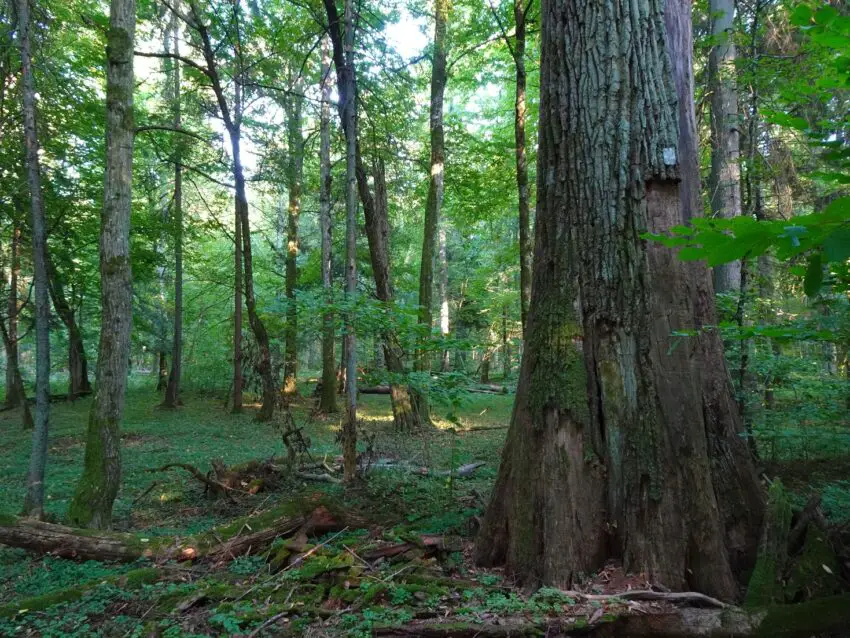Of all the places we visited on our tour of the Podlaskie Region, the Białowieża Forest seemed to be the most popular among travelers. At least, this is the only place where we met a significant amount of other foreigners.
It’s not hard to see why this area draws plenty of visitors. Together with Belovezhskaya Pushcha across the border in Belarus, the Białowieża Forest is the largest remaining patch of the massive primeval forest, which once covered the European Plains and is protected as a UNESCO World Heritage Site.
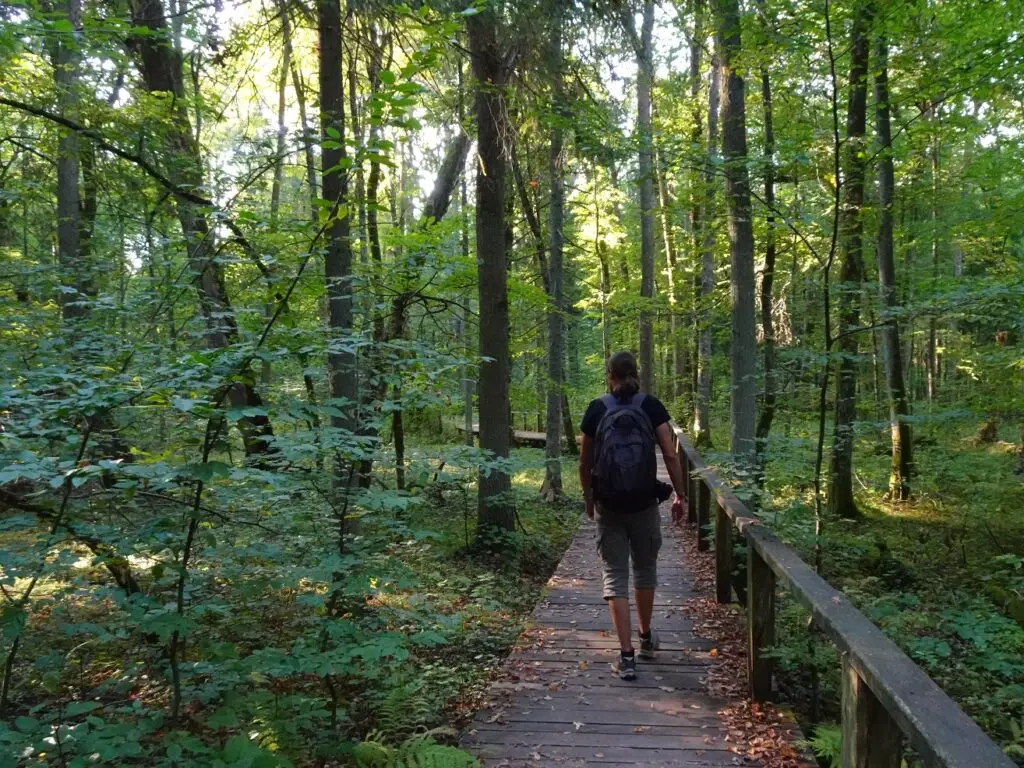
To ensure its protection, the central core of the Białowieża Forest can only be visited with a certified guide. While we were in the area, we took a tour of the Strictly Protected Area, and it was by far our favourite experience in Białowieża National Park. Read on for everything you need to know about this magical place.
This post may contain affiliate links, and I might earn a small commission at no additional cost to you. For more info, click here.
Guided Tours of Białowieża Forest
We took a tour with the official PTTK tourist service and were super happy with our experience and our guide Joanna. The tours can be booked at their information booth at the southern entrance to Białowieża’s Palace Park.
Apart from them, there are also tons of private companies offering well-rated tours of the Zone and other attractions in the Forest. Have a look at some options below.
A Bit of History
Białowieża Forest is one of Europe’s last and the largest remaining parts of the primeval forest that once stretched across the European Plain. As its history dates back over 10,000 years to the beginning of the Holocene, it’s one of the oldest and most biodiverse forests in Europe.
Historically, Białowieża was a royal hunting ground for Polish kings and Russian tsars, which actually helped preserve its ancient woodlands. In 1932, parts of the forest were designated a National Park and in 1979 it was put on UNESCO’s list of World Heritage Sites, further helping to protect the amazing nature of the place.
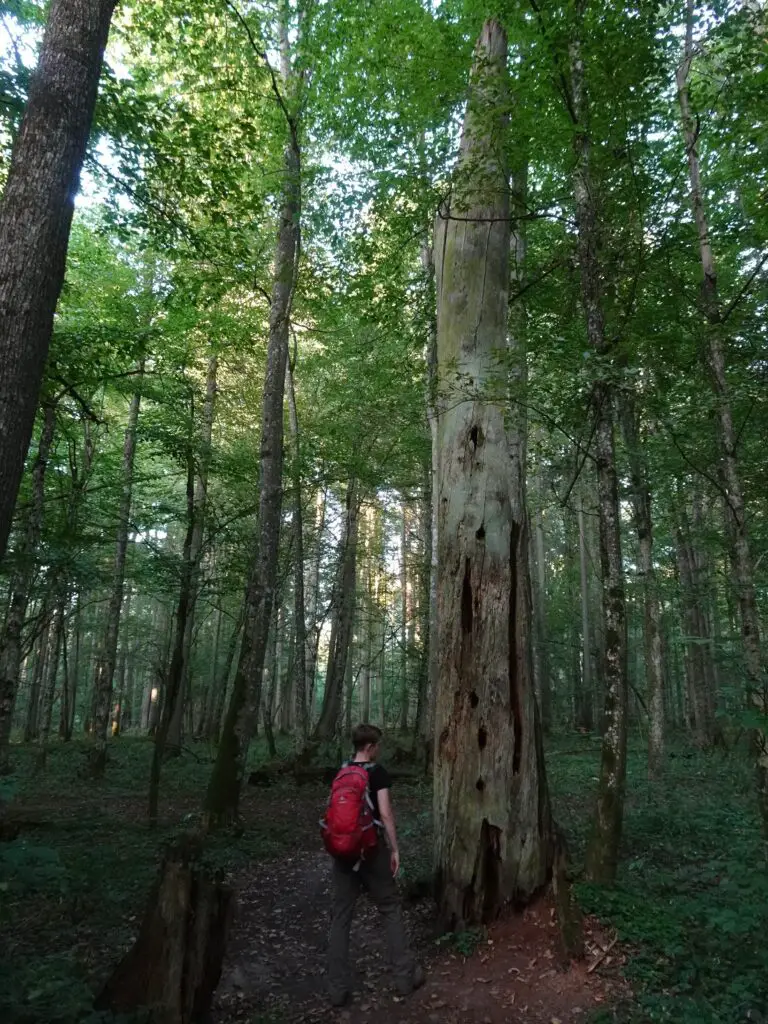
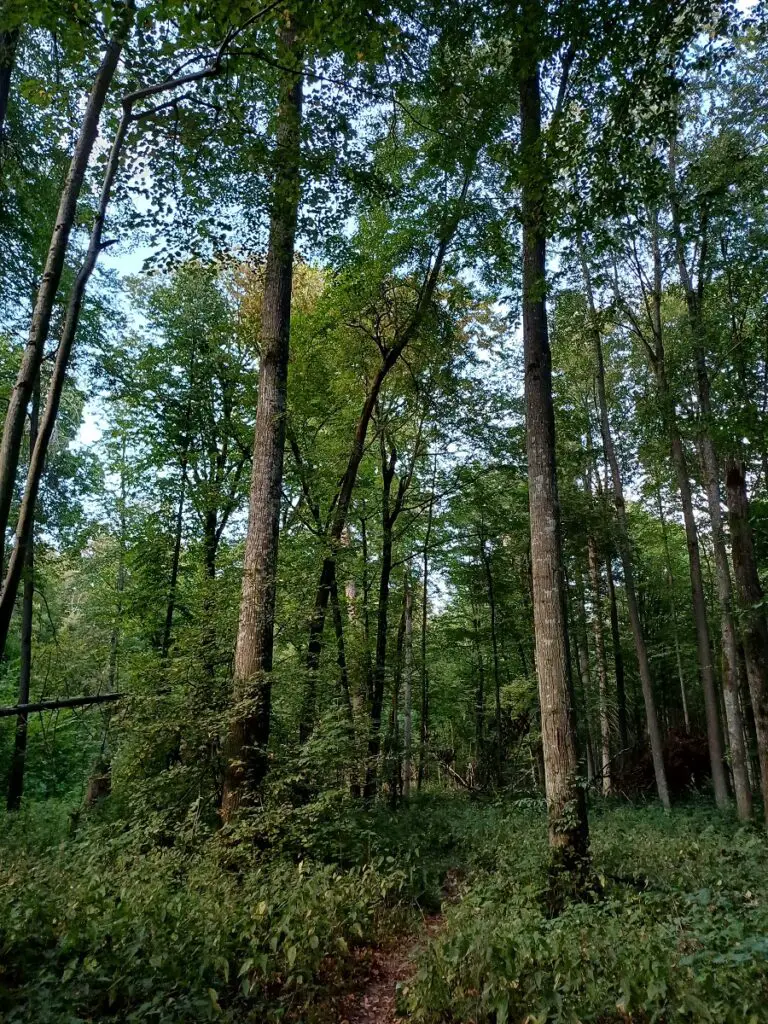
The special protected zone is the most untouched section of the forest and operates under strict regulations to minimize human intervention and as such, you can only visit a very small area in the southern part of the zone with a certified guide.
What Animals Can You See in Białowieża Forest?
Most people think of European Bisons when it comes to Białowieża Forest and there are over 800 of them spread out across the forest, but it’s also home to wolves, lynx and red deer. Most of these are very hard to spot in the thick foliage of the forest, though.
We, too, didn’t manage to see any of the bigger mammals in the wild (only in the nearby Bison Reserve), but we managed to spot many smaller ones, like red squirrels and bank voles, as well as lots of frogs and some rare birds.

Best Places to Stay in Białowieża
Budget: Dom Zajezdny
Midrange: Stoczek 1929
Luxury: Hotel Żubrówka Spa & Wellness (pictured)
.
A Description of the Tour
To give you an idea of what to expect, I will describe our tour of the strictly protected area. As I’ve explained above, we took a tour with the PTTK Organisation, but according to our guide Joanna, most tours follow the same route, so you should get a good idea, no matter what company you choose.
Białowieża Palace Park
We started our walk from the PTTK Info Point at the southern end of the Palace Park, and the first part of the tour led through the park. Right away, Joanna impressed us with her super specific knowledge of the local nature (as well as the history of the place).
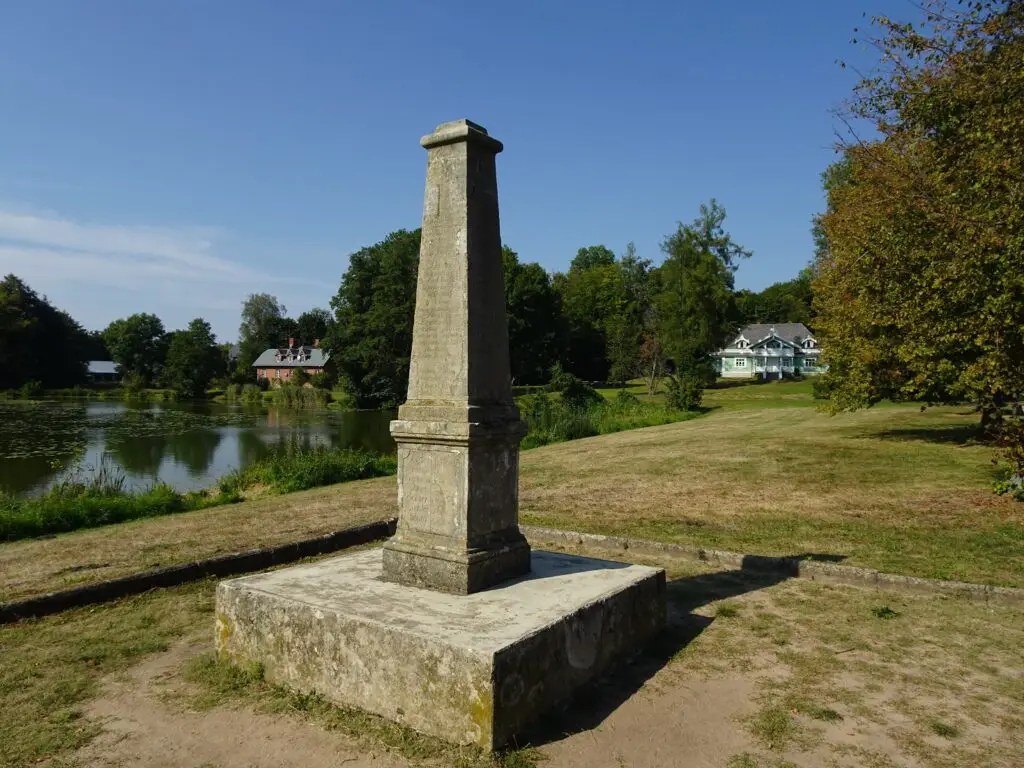
The Palace Park has the layout of an English Park and was created by famous Polish Garden Architect Walerian Kronenberg at the end of the 19th century. The palace itself was damaged my the Nazis in WWII and finally torn down in the 1960s, and the only remaining part of the original building is the huge redbrick gate standing near the Natural History museum.
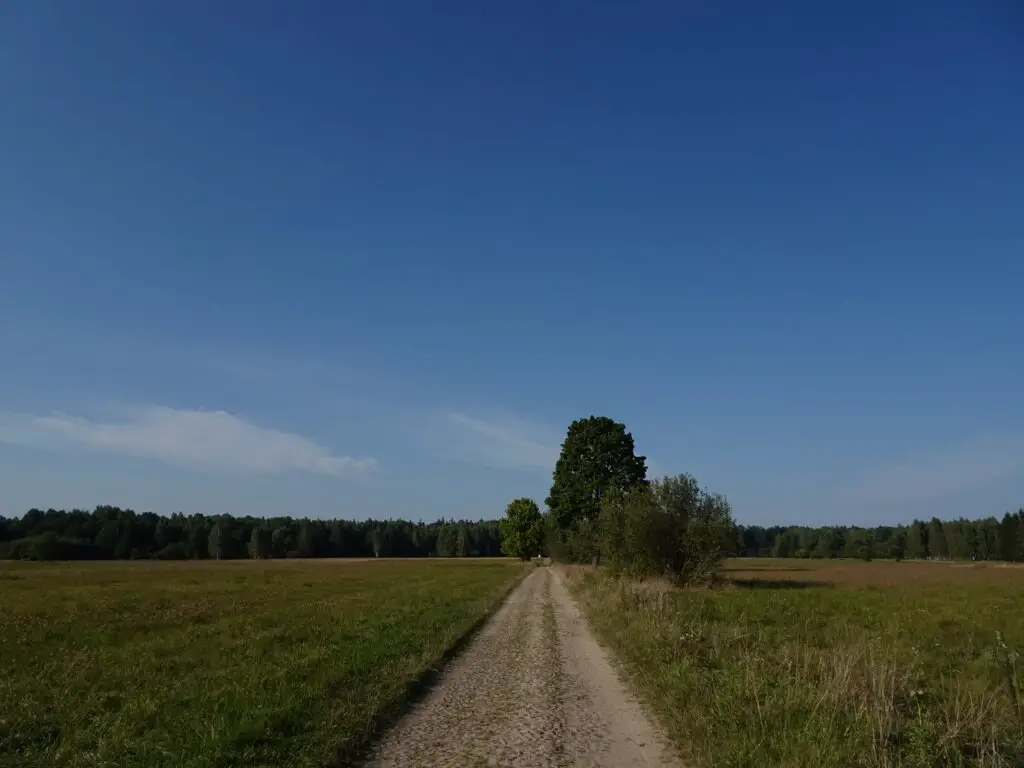
After crossing the park, we continued walking north over the fields until we reached the impressive wooden entrance gate to the Core Zone. Here our guide explained a bit about the history of the National Park and the various scientists who studied its flora and fauna over the decades. A few of them are honored with memorial stones near the entrance gate.
Entering the Special Protected Zone
The protected zone consists mainly of hornbeam, spruce and pine trees, with some impressively large oak trees in between. It’s a magical place, especially when the sunlight filters through the leaves. This unique atmosphere was increased by the fact that the three of us didn’t meet anyone else while walking through the forest.
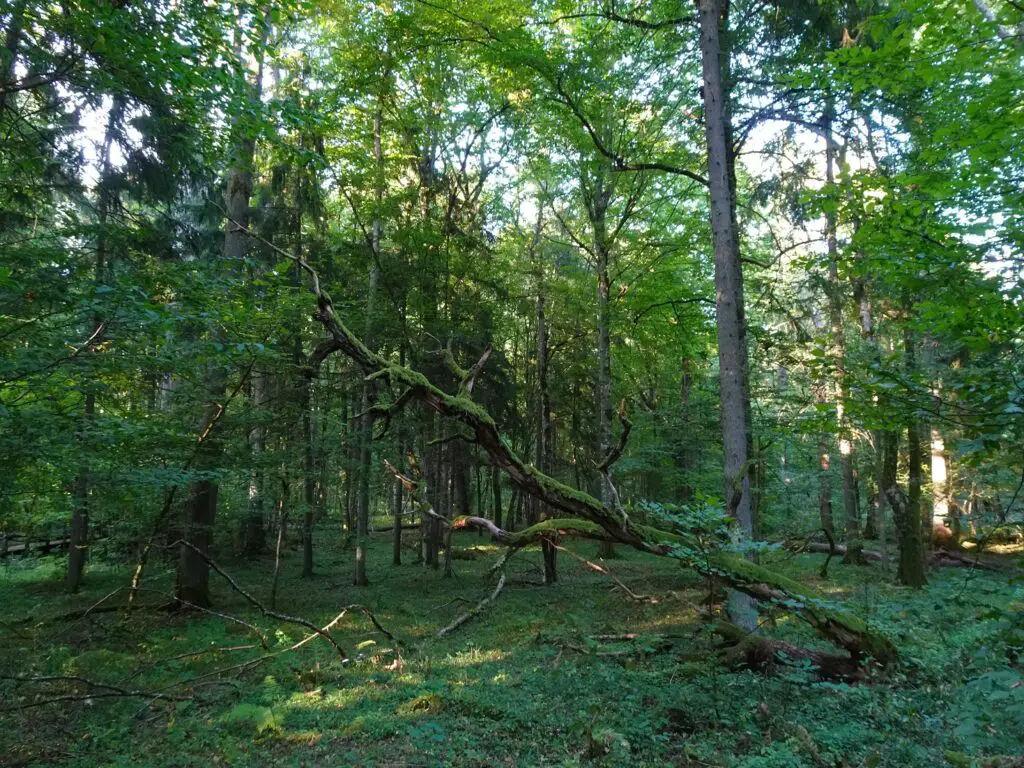
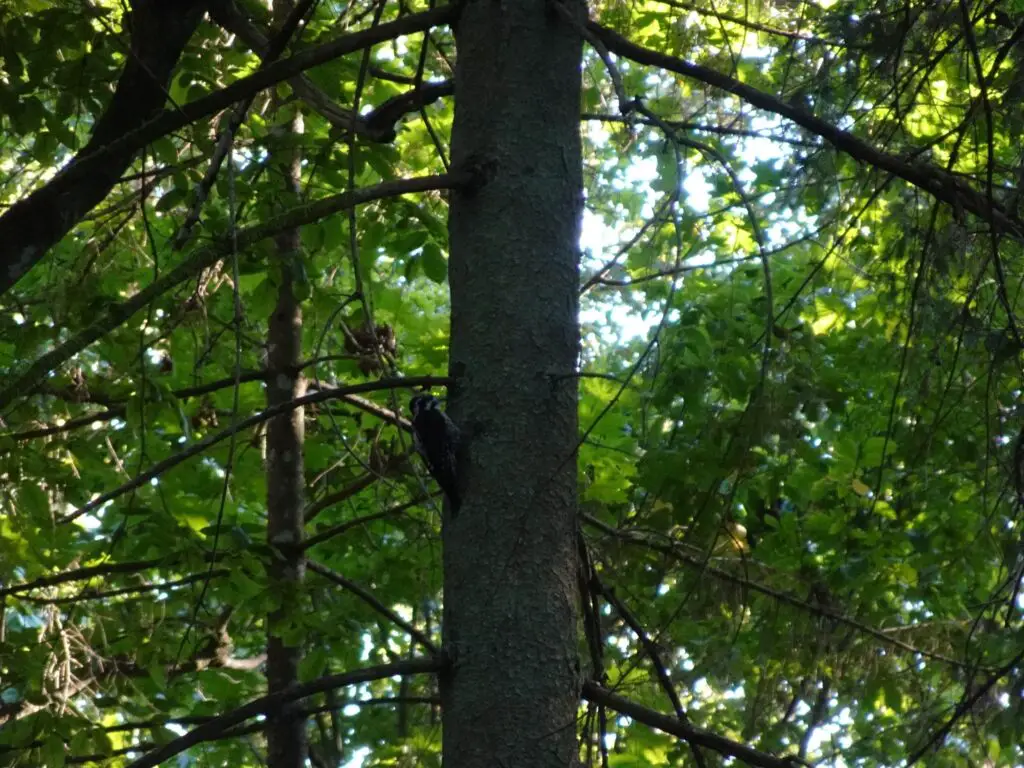
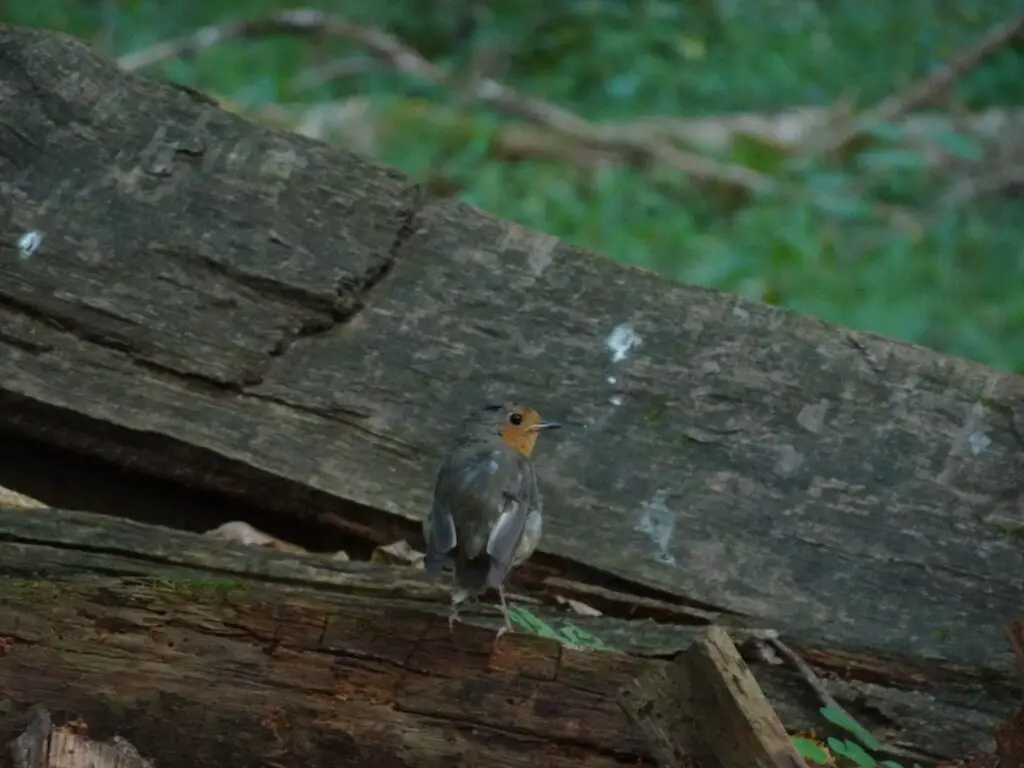
After a while, we turned off the main path and followed some smaller trails through the underbrush, where we spotted plenty of bank voles and frogs, as well as some red squirrels. We also saw lots of birds, including a Three-Toed Woodpecker, which apparently is super hard to spot, according to our guide.
This part of the forest has a marshy ground and a section of the trail leads along a wooden boardwalk. Something that struck us was the large amount of dead trees in this area. The tree trunks are left where they fell, as they are an important part of the local biomass and refuge for insects and mushrooms.
The Jagiełło Oak and the Way Back
The farthest point we walked to was the Jagiełło Oak, which is arguably the forest’s most famous tree, even though it already fell down in 1974. According to legend, King Władysław II Jagiełło rested under the tree before the Battle of Grunwald in 1410, although the oak is apparently much younger.
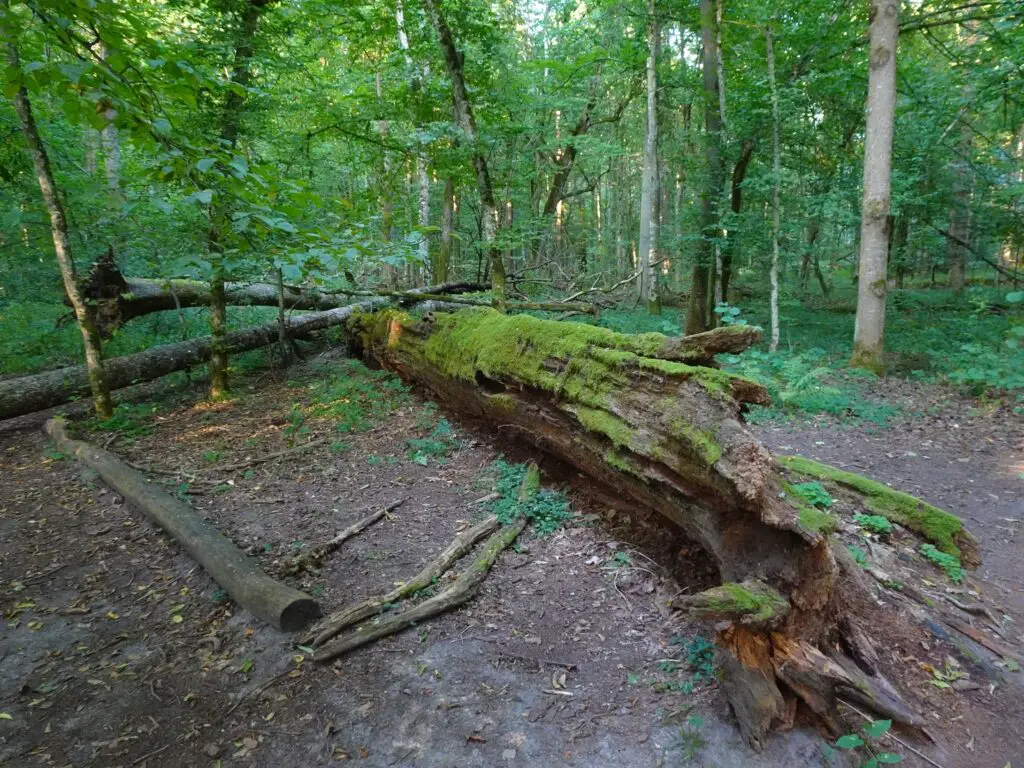
Even without the historical background (and without actually being… you know… alive), it’s an impressive tree, and our guide told us that some of her tour groups are really keen on seeing it. Back at the main trail, Joanna pointed out some scratches on the ground made by wolves (We absolutely wouldn’t have been able to identify them ourselves).
On the way back, we came across a sombre memorial to a massacre the Nazis perpetrated in the forest during WWII, which gave the peaceful surroundings a very different feel. After taking another small trail through the underbrush, we emerged on the main path and made our way back to our starting point.
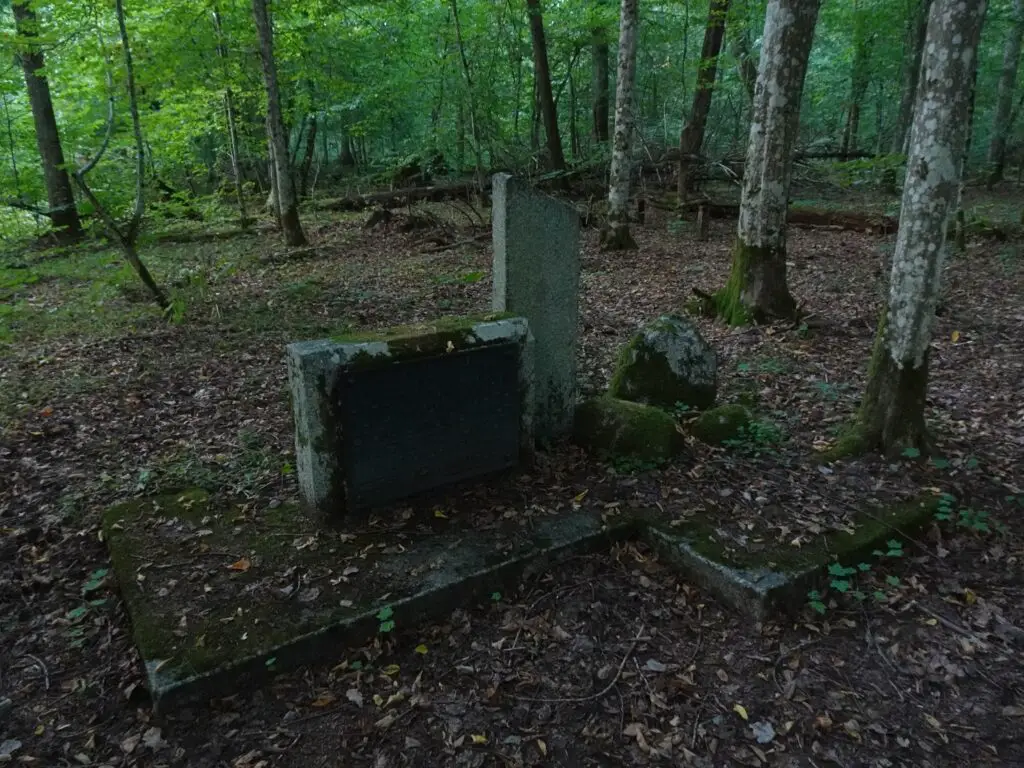
While we only saw a tiny part of the Special Protected Zone, we felt like we got a good feeling for the forest through the tour, which was not least due to the many interesting facts that our guide told us. For that reason alone, we can highly recommend taking a tour through this area of the National Park.
Map of Białowieża National Park
This map shows both the special protected zone and the other parts of Białowieża National Park. A bigger version can be found on this site.
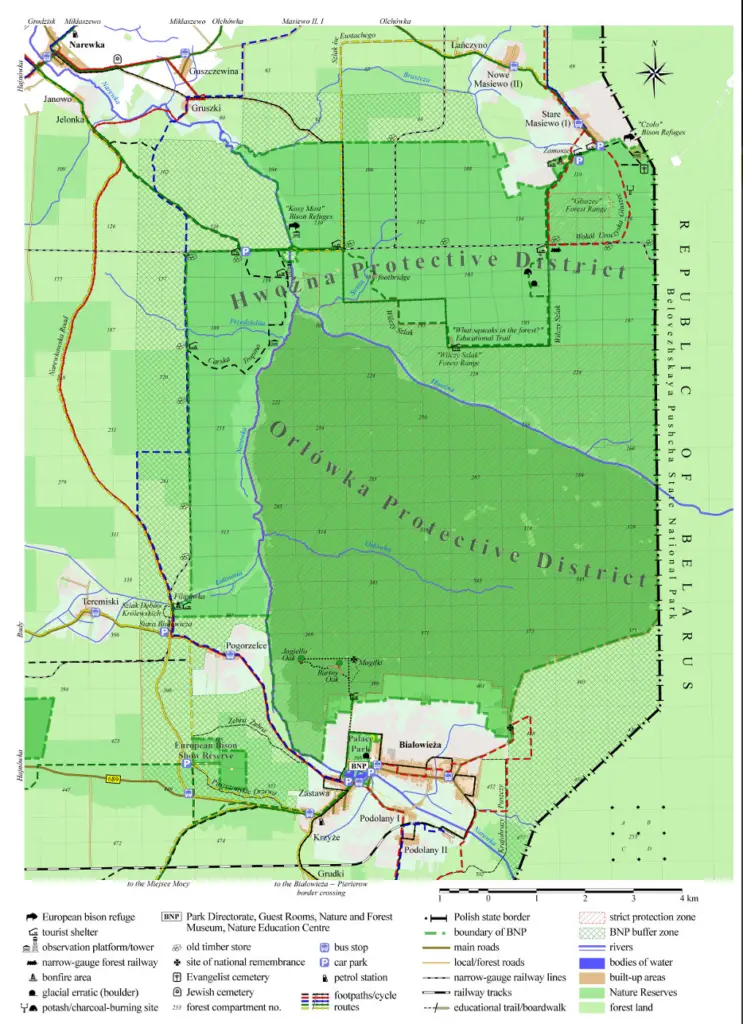
Practicalities
When to Do the Tour
It’s a good idea to either start early in the morning or end late in the afternoon, as this increases chances of spotting wildlife. At these times, there also seem to be fewer visitors. We started our tour at 3pm and finished around dusk, and only spotted two other people in the distance at one point.
That said, visitor numbers are likely higher during the summer main season (we came here in the beginning of September), so if that is important to you, make sure to inquire what’s the calmest time before you book the tour.
How Long Does the Tour Take?
The one we took with the PTTK covered approximately 8km took about 4 hours (which felt ideal), but different tours have shorter or even longer durations, so make sure to check before booking anything.
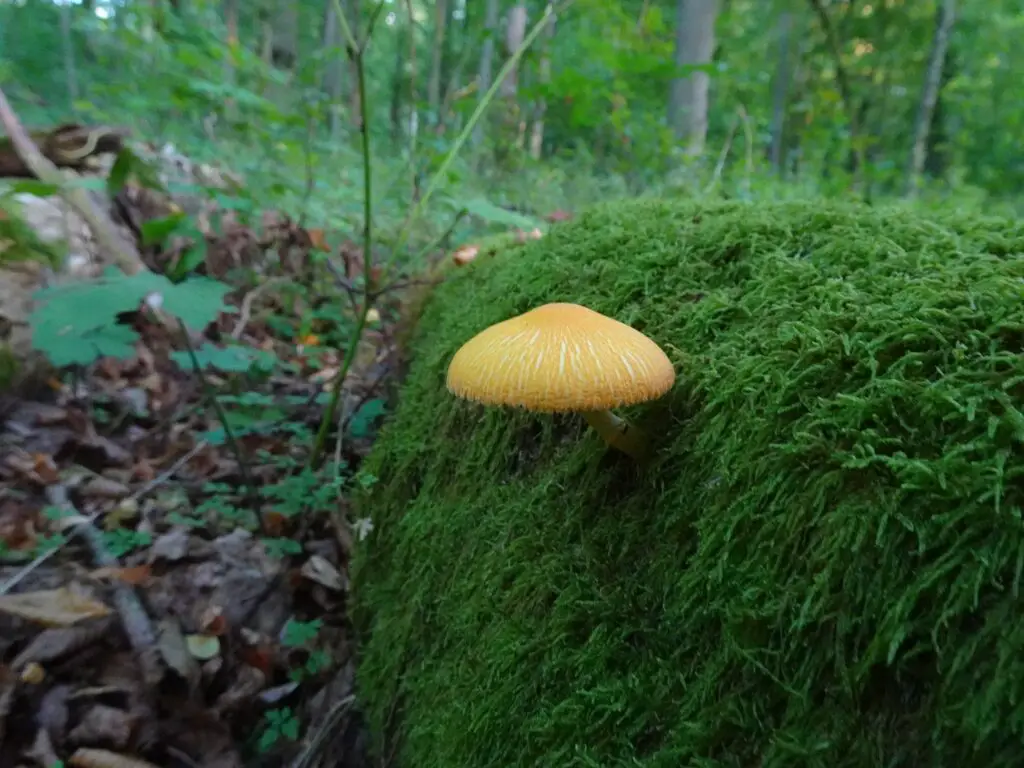
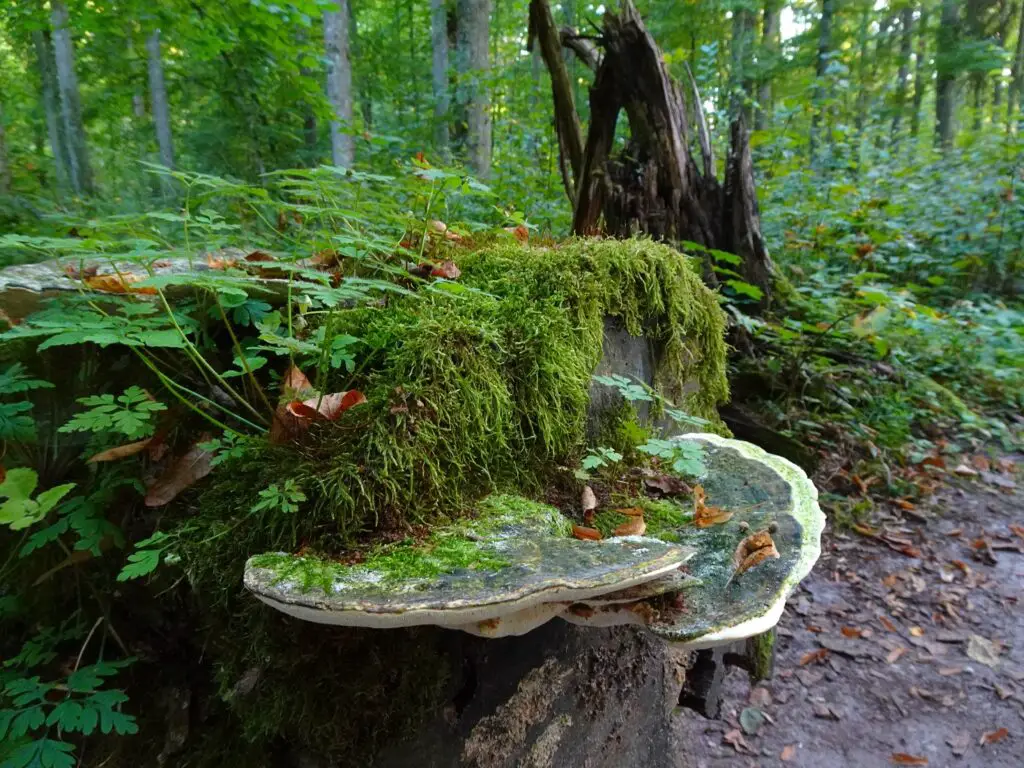
How Much Does the Tour Cost?
With the PTTK, there is a fixed price of 530 złoty per group up to 10 people, which means that it’s cheaper the bigger your group is. Additionally, you have to pay an entrance fee of 11 złoty per person.
The Best Hotels near Białowieża Forest
We stayed at the small Dom Zajezdny pension in Białowieża village, which is a good budget option. There are also plenty of midrange options in town, like Stoczek 1929. If you’re looking for something a bit more luxurious, you might want to consider staying at Hotel Żubrówka Spa & Wellness.
How to Get to Białowieża?
Getting around the area is easiest by car, but if you don’t have your own transport, you can take a train from Białystok (or Warsaw) to the town of Hajnówka and then take a bus from there to Białowieża Village. The bus schedule can be found on this site.
